23 Jul Stand up for Nature. Vote NO on Parks
Posted July 21, 2014 from Seattle, WA
“It’s not that expensive to take good care of natural areas.”
–Kurt Zwar, former Park Steward at Magnuson Park in Seattle fired and charged with crimes for removing non-native invasive plants from a meadow
In defense of nature, Green voters should vote no on the Parks District, Proposition One, ballots due August 5, 2014. Here are some reasons why:
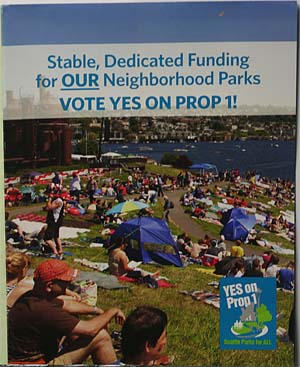
Parks makes no real secret of the fact it doesn’t care much about nature
If you are a Seattle voter, you probably have received the brochure pictured above that I received in the mail. There are lots of projects and lots of pictures and lots of reasons to vote for Prop. 1. Nature, however– or any other word regarding the stewardship of our biological heritage–is not even mentioned.*
*(there is a shot of a kid holding a turtle and that’s all good, we want kids to be exposed to and involved with nature. But no mention of the word in the text however and no pictures of critters or plants in natural habitat)
Late News: Charges against Kurt Zwar have been dropped as of the 25th of July. My ad coming out Sunday July 27 will reference the Kurt Zwar case as though he were still being charged. The ad-copy was written before the charges were dropped. The deadline for ad copy was 4 pm the 24th, charges were dropped on the morning of the 25th.
But Parks is out-of-control in its contempt for nature
The Danny Westneat column of July 23rd in the Seattle Times recounts the story of Kurt Zwar, a volunteer land steward with the Parks Dept. Some paragraphs in the article have to be read twice, as initially they seem to make no sense.
Shockingly, the Parks Dept. has charged Zwar with destroying Park property. The charge could land Zwar in jail for a year.
What Zwar was doing was removing non-native shrubs from a meadow. The shrubs were on the Parks list of vegetation to be removed, that is they were non-natives on a list of plants to be removed from a meadow that was supposed to be protected. I.e, Zwar was doing his job.
Not only was he doing his job. He was doing it well at great expense of time on his part as he labored for free for more than 2000 hours and purchased over $2000 worth of native plants on his own dime.
What takes this outrage further into the Orwellian zone is that Parks never communicated with Zwar about any of this. All actions by the Parks Dept. essentially came as a surprise to Zwar.
When people hear the story, they scratch their heads and wonder, “What really happened?” Zwar must have been doing something terrible that we aren’t being made aware of.
And indeed, from Parks standpoint he was. Zwar was aggressively defending nature and the 2003 Vegetation Plan that had been adopted at Magnuson Park. But Parks wants nature to be available for use by recreationalists at any and all times. Nature is only there to be played in by happy humans.
Parks set about removing Zwar, and they clearly wanted to do it in a way that would send a signal to all the other volunteer land stewards throughout the Park system.
It should come as no surprise that a recreational group, the wind-surfers, are currently expropriating part of the meadow that Zwar was trying to protect. The Photo shows a Killdeer on the meadow from Delia’s and my March trip to Magnuson Park.
(All this was written prior to the charges being dropped. Those who feel the incident can now be forgotten must consider the fact that Zwar is out $5,000, the cost of hiring a lawyer. He’ll never get that sleep back from wondering if he’d be going to jail. And they should also wonder if the charges would have been dropped like a hot potato had Danny Westneat not gotten ahold of the story.)
Don’t credit Parks for Magnuson’s wetlands
Before I stray too far from Magnuson Park, I’d like to dispel a misconception that I had, and others may share. Anyone who’s been to this Park on Seattle’s Northeast shore of Lake Washington may well come away enamored of the wetlands there, and they may have this warm and fuzzy feeling: “My Parks Dept. is doing great things for nature.” (Photo is of Green-winged Teals resting in Magnuson’s wetlands this March.)
The facts are these wetlands were forced on the Parks by Federal law, as signs at the Park indicate (“This is a Federal Wetlands”). The Wetlands at Magnuson are mitigation for wetlands destroyed by the Parks Dept at Magnuson with ball fields and by the Dept. of Transportation at Union Bay with the 520 project.
Speaking of Magnuson, Parks is not done bulldozing it
And while still at Magnuson, folks may feel that the balance between nature and athletics that the Park Dept has struck at Magnuson is reasonable. I don’t share that feeling, but regardless, Parks does not see the current situation as in balance. Parks is not done bulldozing meadows at Magnuson for synthetic-turf-ball-fields. Two more athletic fields are currently planned, and all that’s needed for the bulldozers to rip into the meadows is money that will be pouring in once the voters pass Prop 1.
The paid-amusement park plan for Lincoln Park was a deal-breaker
Parks is not satisfied with land simply held in nature, even if everyone is enjoying it. Lincoln Park was “broken,” in the eyes of the Parks Dept, because it wasn’t supporting a public/private partnership that would generate money to increase the size, clout and budget of the Park Dept.
That’s why there was an ill-fated plan to hand Lincoln Park over to a paid amusement ride Company.
But West Seattle folks didn’t think Lincoln Park was broken. They thunderously rejected the Parks proposal for a paid Zipline company to use the big trees in Lincoln Park’s tiny oldgrowth forest as a money-maker. This summer the song of the nationally-declining Olive-sided Flycatcher was easy to hear in Lincoln Park, suggesting this bird, which is becoming decidedly more scarce in recent years in lowland Western Washington, was pretty happy with the habitat the way it was.
Parks is turning our lives sterile and artificial with it’s rampant conversion to synthetic-turf fields
I have to hand it to Parks. In their second direct mailer that I received recently Parks has on the cover a photo of two kids playing soccer on an artificial field. The kids appear to be having lots of fun, there will be plenty of time for them later in life to see an Orthopedic Surgeon.
If there were no other issues regarding the Parks District, the rampant installation of synthetic turf fields alone would drive me to vote no. I know I am not in the mainstream here, I see people out picnicking on hot plastic at 10th and Denny on Capitol Hill and it feels like I am walking in a movie written and directed by George Orwell. Perhaps I’m an aging curmudgeon and me and those who feel this way will soon be gone and in the future people will think it’s weird and dangerous to have a picnic unless it’s on plastic.
One thing for sure, that’s not synthetic turf in the picture above showing a Barn Swallow foraging in a habitat they rely on: wet real-grass fields. The Barn Swallow population in Seattle has declined precipitously in recent decades–no doubt synthetic turf fields only represents a small part of their problems. But the spread of these sterile fields represents a vote for a brave new world where we don’t have the graceful flight of happily chattering Swallows weaving in and around picnickers or athletes.
Synthetic Turf proponents are sure to point out that the overall footprint of the sport–given a fixed number of participants–could be smaller with synthetic fields, as they can take more hours of abuse. But the flaw in this argument is there is no fixed number of participants, it’s an under-priced (unpriced) good with an ever-expanding universe of possible soccer players. Since price is the only thing that equilibrates supply with demand, there will never be enough fields and there will always be the complaining soccer-parent who claims there kid has no place to play.
The Goose Killing Program should be a deal-breaker, regardless of where people stand on animal-rights
Seattle Parks is one of the regional jurisdictions that has a standing agreement with the Federal Government’s wildlife-killing agency, Wildlife Services, to kill Canada Geese.
I almost refrained from putting this in this post, for fear of losing votes: for many, killing Canada Geese seems like a great no-nonsense way to solve a problem and deal a rebuke to animal-rights people in the process.
I prefer to see this entire question not through the lense of the animal-rights debate at all.
What is happening is a bureaucracy that has always served agriculture is being threatened by the reduction of the overall agricultural footprint. Farms used to be a big-deal in King County, now they are scarce and the ones that remain are mostly small organic farms that have no interest in calling in the wildlife-killers from the federal government.
What is a poor wildlife-killing agency to do?
Create an alliance with golf-course and public-land managers to kill geese on urban lands. Propagandize against the geese with the help of journalists looking for a subject they can really have fun with to convince enough of a majority of the public that there really is a job there that needs to get done.
Here nature has handed the propagandists a huge advantage. When we think of fecal material or feces, we tend to think of the feces of animals that eat heavy fats and proteins and digest them well. Humans cats and dogs produce some nasty stuff.
Geese, and this all comes from David Attenborough’s magnificent series on Birds, are unusual among the animal world. They are essentially, from a gastro-economic point of view, cows that fly.
Geese and cows are both grazers of grass. But cows have a very heavy digestive system replete with four stomachs to process the heck out of the grass and retrieve a high percentage of it’s potential nutrition.
Since Geese have to be able to fly, they can’t afford an elaborate digestive apparatus. They only process the grass lightly, and only get a small amount of nutrition from each blade of grass. Then they poop it out the back as quick as possible and eat another blade.
Feces, therefore are not created equal. Goose feces is more like grass clippings wrapped in slimy saliva than anything Fido or Kitty produces.
But when a journalist dutifully reports a Wildlife Services propagandist saying “Geese produce three pounds of excrement a day,” the statement can produce a gag reaction and the desired effect for Wildlife Services.
Then they pile on other biological inaccuracies that unsuspecting journalists rarely spot. They blame human-feeding for Geese being here in the temperate zone, or they blame someone relocating geese to a certain area. In reality, Geese weren’t here in the temperate zone because there was no irrigated, mowed grass prior to the advent of lawns. They altered their behavior immediately in response to human management that favored their ability to forage through the summer. They’ll get to any place with lawns, regardless of whether they’ve ever been located there, they are a very capable group of birds.
Parks is mostly refraining from using lies to promote it’s Cheasty Land-Grab, it’s going in for manipulative half-truths
1.” homeless camps”–Parks chose not to evict James, the homeless man who has lived in Cheasty by the Maintenance Yard for the last 5 years. Instead they let him stay and destroy pieces of Cheasty so they could use him in their power-point presentations. His presence was invaluable in that it helped to scare the neighbors to say the existence of a greenbelt meant the presence of a scary homeless “camps,” so they hyped his presence and gave him a disparaging nickname, “The Moleman.” This is in spite of the massive damage he was doing to the greenspace by excavating about an acre of it by and into the main wetland (photo above). They have intended, all along, (there is no reason to presume otherwise) to evict him once they get the land-grab done, but he has been the single most useful argument for the bike park all along. I met James, who is a nice guy, and shook his hand. I tried to change his mind that vegetation all needs to be dug up and turned into mud pits. That’s apparently more than Parks ever bothered to do.
2. “Pilot Project” This is a Pilot Project if the definition in Websters means a plan to get around the rules until conditions become favorable to change those rules. There is no plan for it ever to be reviewed by anyone other than the people who have been pushing it all along.
3. “Public process”. There was none. The Parks own materials show a blank next to the words “public process.” The meeting held on March 25th was to let us on Beacon Hill know what was going to happen and that we could not stop it. I can’t help noticing myself that the March 25th meeting was scheduled right after my first ad came out.
4. “overrun with non-native vegetation” Another manipulative half-truth. It is true that when you approach from the Parks Maintenance Yard you are taken aback by the lollipop look of huge Ivy growth on the Maples. But from the wetlands north the green space is in decent to wonderful shape. In any case, the need to restore a piece of land does not imply the need to give it away or put a huge footprint of paths, colonades, jumps and free ride areas and parking lots.
5, “Non-native Norway Maples” My personal favorite. The oldgrowth Norway Maples are classed by Parks in the same category as the English Ivy and Holly, as though they are harmful to the forest or invasive. Invasive and non-native do not mean the same thing. The Norway Maples are functionally the same in the eco-system as the native Big-leaf Maples, just as the non-native water-lilly are similar in function to the native water-lilly in Andrews Bay. (I.e., it’s probably preferable to have the native, but it is definitely not preferable to remove the non-native if it’s replacement by the native is not immediate and a sure-thing.)
6. “The trails are even narrower than foot trails” This is kind of a manipulative half-truth when you realize that foot trails are by Park-rules always 4 ft. wide. This width will soon come into conflict with Schmidtz Park’s narrow spaces and steep slopes. A rule that makes sense at Green Lake doesn’t at Cheasty or Schmidtz.
A Quick Conclusion
It’s inevitable that Park managers and politicians end up “conspiring” against natural areas. They are people people, not bad people, and they want to make the people who present themselves to them as happy as possible. And they want the bureaucracies they command to hire more people and give them meaningful work. Taking care of nature is cheap–it doesn’t create the money or need for “new hires,” and is boring by comparison to satisfying recreationalists, who are socially-skilled, good looking, legion and come pre-organized in e-mail and phone trees that can be easily activated to come to a meeting or write their City Council.
The problem is, taking care of nature is a natural law obligation for all of us and for Parks management in particular. Ours is the is the generation on whose watch our natural heritage is beginning to seriously erode away. Seeing natural areas as really nothing more than empty places to be filled with people recreating and playing is all part of that. It’s incredibly important to send a message that it’s not ok.

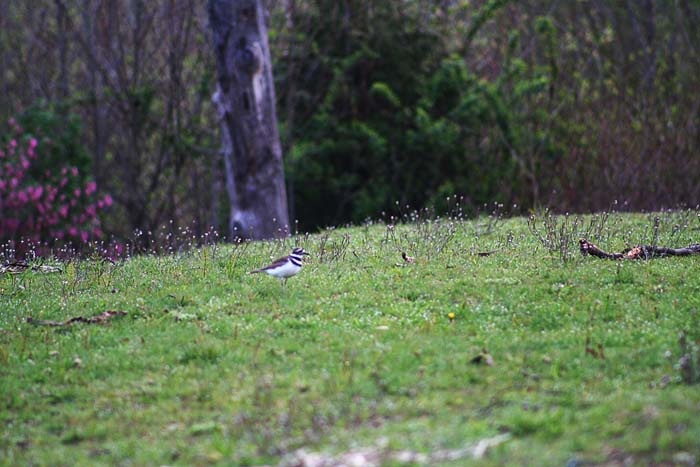
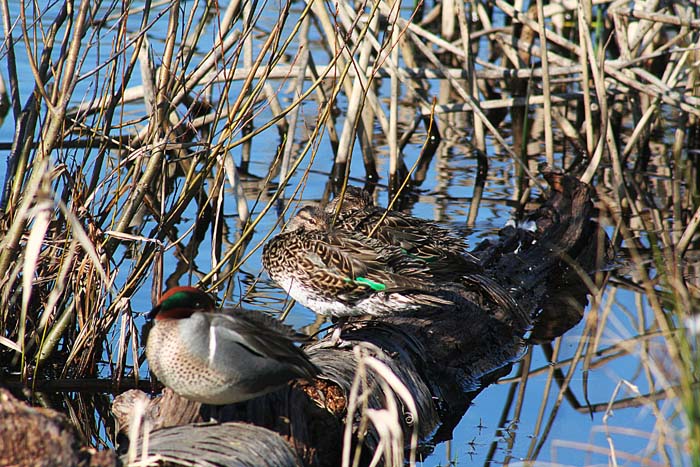
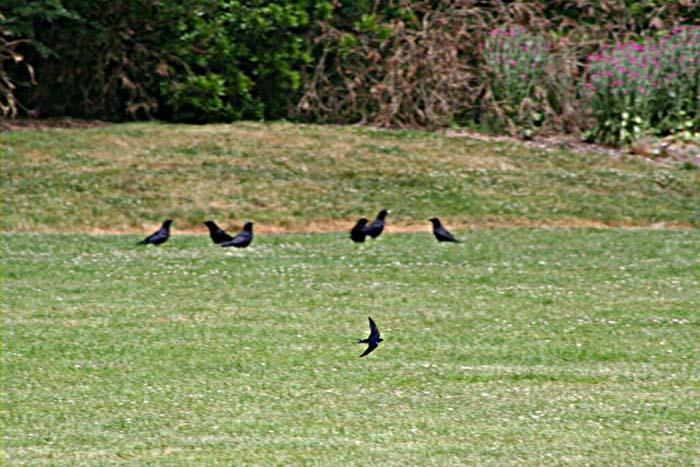
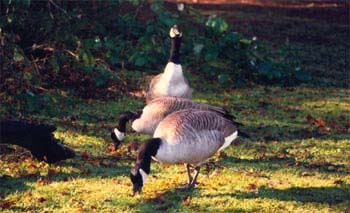


Sorry, the comment form is closed at this time.